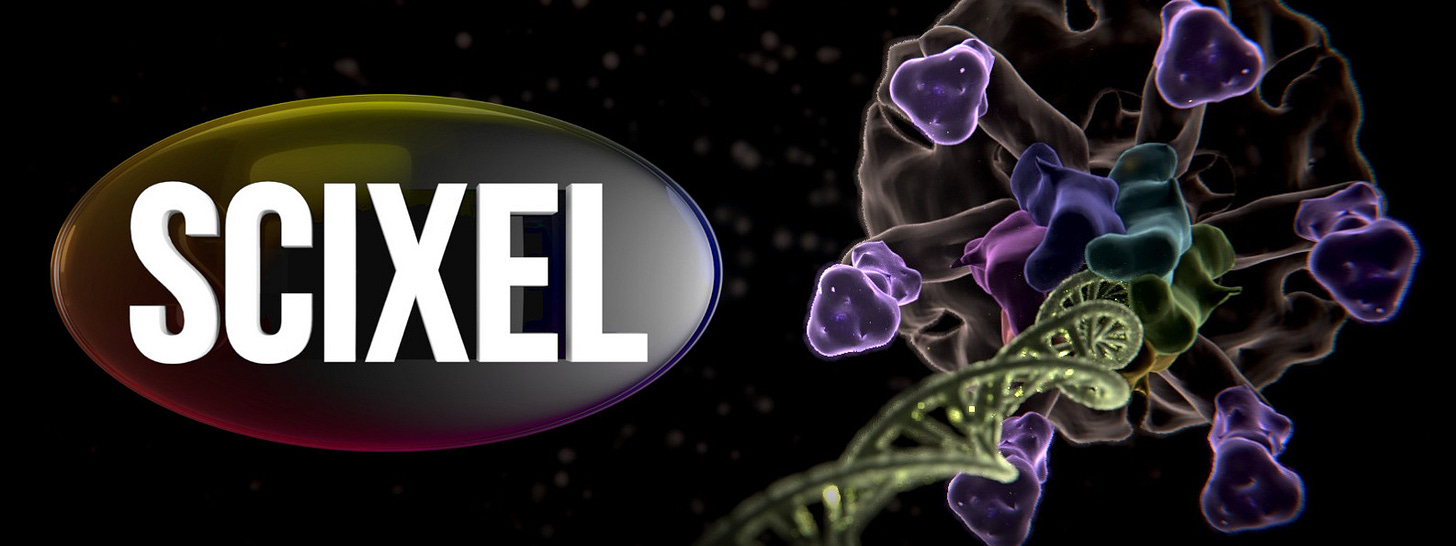Imagen Courtesy: The electronic band structure of graphene exhibits a so-called Van Hove singularity, where the density of states diverges. This divergence occurs at multiple Van Hove points (yellow dots) that are at higher energy than the well-known Dirac points (red dots). As graphene is doped, the Fermi level (green line) moves up to the Van Hove singularity and beyond, resulting in enhanced many-body effects that can produce collective states such as unconventional forms of superconductivity and magnetism. Michael M. Scherer (Institute for Theoretical Physics, University of Cologne, Cologne, Germany)
Due to the chemical nature of the graphene with its zero band gap, mobility related to the delocalization of the π-bonding orbitals, and lattice periodicity, the doping of graphene can be achieved either through the breaking of lattice periodicity or the electrostatic confinement of the delocalized pz orbitals. There have been several mechanisms proposed and tested that have been effective in shifting the Fermi energy to either p- or n-type regions of the band structure and the creation of p-n junctions at the interface. It should be noted that by breaking the lattice symmetry, the electronic states and band edges are modified, decreasing the mobility. With chemical functionalization, scattering is introduced into the graphene flakes, also decreasing the mobility.
Since graphene is a self-contained sheet with no real interface layer, it should be noted that process integration with oxide dielectrics can be difficult due to trapped impurities at the interface in terms of creating floating gates for voltage-controlled variable gate transistors. This effect is relevant for device applications of graphene films. It should also be noted that the introduction of trap centers and doping sites through contamination will degrade the continuity of the 2DEG at the trap or dopant site, causing electron and hole pooling to occur.
Electrostatic doping
Electrostatic doping can be controlled through a variety of methods; some use floating gates with oxide buffer layers and others use direct gate contacts to locally modify the Fermi level allowing for the voltage-controlled operation of the graphene device. Most electrostatic gating is accomplished through a horizontal device architecture to preserve the mobility of graphene for ultrafast devices. With both direct and indirect contact, electrostatic gating can be accomplished by utilizing metals with two different work functions; polymers with different end groups and finally, layered materials with different opposing band gaps with the higher band gap being the acceptor and the lower being the donor. Metals with dissimilar work functions are normally integrated into a horizontal device with many different combinations to choose from. The amount of gap opening is defined by the difference between the two metal work functions and the induced electric field decreasing down the length of the sheet making the contact placement critical.
Chemical doping
As mentioned briefly in the electrostatic doping section, chemical dopants can be utilized to modify the electrical characteristics of graphene, modifying the Fermi energy to create p- or n-type doping. The chemical doping mechanism of graphene works by having the dopant bond either ionically or covalently to the delocalized pz orbital. The covalent bonding of a dopant with graphene occurs through modification of the delocalized pz orbitals to electrostatically hold an adatom onto the surface, which modifies the band structure by binding the electrons in the pz orbitals, thus creating a required energy (a band gap) for conduction. The chemical dopant can be ionically bonded to a single carbon atom by breaking a c–c bond and attaching to that bonding spot, which breaks the graphene symmetry introducing a scattering defect and a band gap opening.
Imagen Courtesy: Daoben Zhu (Beijing National Laboratory for Molecular Sciences, Key Laboratory of Organic Solids, Institute of Chemistry, Chinese Academy of Sciences, Beijing, P.R. China)
The amount of surface adatoms is reliant upon the dopant and the type of bonding with ionic bonding and larger electronegativity being able to obtain a stronger bond, higher dopant concentration, and higher band gap shifting. However, it should be noted that the higher the doping, the more scattering and the lower the mobility, leading chemical doping to be typically done on vertical devices with a small cross section and thus small diffusion length
Geometry restriction
The final way to dope graphene is by breaking the lattice periodicity of Graphene. This can be done by reducing the size of a graphene sheet in one direction so that the Fermi levels from the periodic boundary conditions are refined, providing doping through a quantum confinement effect. Quantum confinement occurs when the material dimensions are below the Bohr radius, which for graphene is at 10 nm. This has been shown to be accomplished through the patterning of graphene into ribbons with one dimension restricted to under 10 nm, thus opening a gap of 2.5–3.0 eV in theory and 0.5 eV experimentally. Graphene with a size in either x or y under 10 nm is known as a graphene nanoribbon and it suffers, like many other graphene synthesis techniques, from a lack of a reliable production technique.
Imagen Courtesy: Geometry of the graphene patches used for gradually shifting carbon atoms (black) out of the graphene plane (gray), identified by 2 numbers: the total number of atoms (including hydrogen atoms) and the number of carbon atoms shifted from the graphene plane. The sets of shifted atoms are defined by adding layers of carbon–carbon bonds to a core consisting of a carbon atom (52-1, 94-4, 94-10 and 118-19) or an aromatic ring (72-6 and 108-12). Frauke Gräter (Heidelberger Institut für Theoretische Studien, Germany)
Traditional semiconductor line definition techniques cannot reliably get a line definition below 20 nm, with large problems creating lines with acceptable line edge roughness. For graphene nanoribbons, the resistance induced through scattering from the line edge roughness is coupled with a lack of graphene conformality, not knowing whether the line definition will create “zig-zag” or “arm-chair” end terminations that provide different conductivity values. The difference between “zig-zag” and “arm-chair” end terminations and the difference in conductivities between the two create a discrepancy when designing a device utilizing multiple nanoribbons or multiple devices utilizing a graphene nanoribbon.
New experiments with doped graphene take the two-dimensional material beyond its “Van Hove singularity” to regions that may host exotic states of matter.
Graphene is famous for its peculiar electronic properties exemplified by the Dirac point, a region in the material’s band structure where electron behavior resembles that of high-energy particles. An electron carrying charge through graphene in a Dirac-like fashion acts like a single particle that barely interacts with its many peers. Philipp Rosenzweig and his colleagues from the Max Planck Institute for Solid State Research in Germany, have added an excessive amount of charge carriers to graphene, moving the material away from said Dirac point to a Van Hove point and, reportedly for the first time, even beyond. The Van Hove point features a large number of states, which gives charge carriers ample opportunity to interact, conspire, and form collective states of matter, such as magnetism and superconductivity. Such collective states cannot be described in a single-particle picture. Excitingly, theoretical predictions for doped graphene include exotic states, like high-temperature chiral topological superconductivity, which can now be explored with the controllable doping techniques demonstrated by Rosenzweig and colleagues.
Graphene Is Grown With the Same Bandgap as Silicon
No doping or nanostructuring is required for new bottom-up method to grow graphene with a perfect bandgap. Researchers in Spain have devised an inexpensive way to grow graphene with the same bandgap that exists in silicon (1 electron volt), and in so doing, may have reopened graphene’s potential as an alternative to silicon for digital logic.
In research described in the journal Science, a team from throughout Spain and led by the Catalan Institute of Nanoscience and Nanotechnology (ICN2) has employed bottom-up manufacturing techniques to assemble nanoporous graphene in such a way that the pores have the size, density, and morphology to create a perfect bandgap for digital electronics. The researchers then made a field-effect transistor (FET) device using this material.
“What we show in our work is that it is possible to fabricate a ‘graphenelike’ material, but with a gap that is very close to the one of silicon,” said Aitor Mugarza, a research professor and group leader at ICN2. “In addition, by simply modifying the width of the graphene strips between the pores (the number of carbon atoms), this bandgap can be controlled. The fabrication method is relatively simple and can be extended to wafer-scale growth.”
Currently, the main methods to induce a bandgap into graphene involve chemical doping or adding pores, or reducing it into nanoribbons—processes known as nanostructuring.
Nanostructuring graphene with current top-down fabrication methods—either by cutting down carbon nanotubes or slicing strips out of graphene—struggles to reach the scale of a few nanometers with atomic precision. This level of precision is required to induce a sizable, homogeneous bandgap that would enable room temperature applications, according to Mugarza.
“The bottom-up synthesis approach allows the fabrication of one-dimensional graphene nanoribbons and, as we show in this work, nanoporous structures with atomic precision and with lateral dimensions in the order of 1 nm,” said Mugarza. “This is the crucial ingredient to obtain a sizable and homogeneous gap.”
Mugarza explains that until now, nobody has fully exploited these bottom-up techniques for graphene because of the difficulty in fabricating devices using these tiny structures. But because of the larger dimensions of the nanoporous graphene produced by the Spanish researchers, it has become possible to fabricate devices with high yield using standard lithographic techniques.
The semiconducting character of the material that Spanish researchers have developed is only indirectly related to the pores, according to Mugarza. The semiconducting gap is, in fact, related to the finite lateral size of the graphene sections that are between the pores. The individual nanoribbons are already semiconductors before coupling with each other to form pores.
While the size of the pores does not directly affect the bandgap, the pore uniformity is correlated with uniformity in the gap value, but not to its absolute value, according to Mugarza. “In other words, the size of the graphene sections between the pores will define the absolute value of the gap, and variations on this size will induce inhomogeneities in the gap value,” he added.
At the scale of this work, a one-atom variation in the lateral dimensions of the sections between pores translates into large variations in the gap, so homogeneity is critical. “The structure of our nanoporous material is atomically homogeneous, and thus shows minimal gap inhomogeneities,” said Mugarza.
Don't hesitate to subscribe if you haven't already done so.
Regards and take care.
Born in 2012, Scixel is a project devoted to the improvement of the scientific comunication through the creation of graphical products: pictures, animations, graphs, posters, etc. Scixel consists of scientists with a deep knowledge in digital graphics but also with a long experience in giving talks, preparing posters and papers and other daily situations of scientific work.
We have focused our work into universities and research institutes all over the world: TuDelft (The Netherlands), NIMS (Japan), Basel University (Switzerland), Universidad Autónoma de Madrid, CNB or ICFO (Spain), to name a few.
Web: https://scixel.es/
If you are a company or an individual who would like to place your advertising in my newsletter you can contact me (email) and let me know your request of type of ad and number of newsletters you would like to place it. I will send you a budget as soon as possible.









